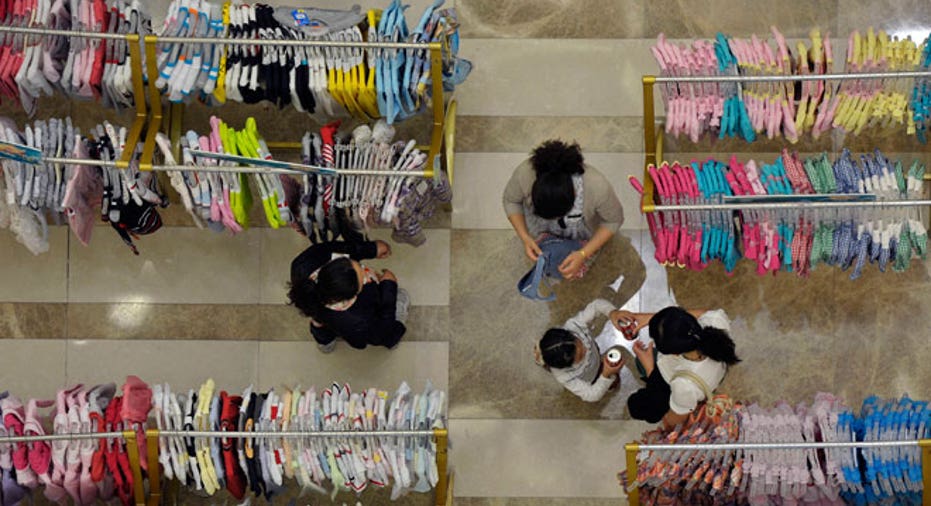Retail's Worst Enemy: Its Own Employees?

It may be the most wonderful time of year for retailers, but it’s also a good time for workers who want to steal from them.
Employee theft has been known to pick up during the holiday hustle and bustle – and with the labor market on the rocks and cash-strapped Americans bracing for the fiscal cliff, retailers across the country could see more of it this holiday season than ever.
A bigger drain than shoplifting
From the security guards at the door to the cameras near the register, it may seem as if retailers are taking aim at shoplifters from the outside world. In reality, thieves from within are taking a bigger bite out of companies’ bottom lines.
In 2011, U.S. retailers lost a total of $34.5 billion in “shrink” – or inventory lost as a result of employee theft, shoplifting, administrative error or vendor fraud – according to the National Retail Security Survey. Of that, 44% was a result of internal theft; only 36% was a result of shoplifting.
Corporate security consultant Thomas Martin of Newport Beach, Calif., says he’s seen an “astronomical” acceleration in employee theft since the third quarter of 2006, when the earliest signs of a weakening economy began to emerge.
From 1969 to 2006, it was expected that anywhere from 14% to 17% of workers were stealing from their employers; in 2006, that percentage began to climb, hitting 75% in 2010 where it has since remained, Martin says.
If that seems high, consider that the predominant type of theft Martin speaks of isn’t the kind that involves swiping money from a cash register. Rather, it involves workers who “steal time” and thus dent productivity.
“The vast numbers of them are stealing time – not coming to work and having someone punch them in, taking two hours for lunch. That’s money right off the top. That’s money coming off the process,” he says. “And during the holidays, that 75% goes on steroids.”
Jewelry stores the No. 1 target? Think again
When employees want to steal, it’s not the ones working behind the desk at Apple or showing diamonds at Tiffany that are most likely to do it.
Stores where jewelry and electronics are sold generally have a lower shrink percent as there’s often a tight system of checks and balances that would make theft of any kind more apparent, says Rich Mellor, vice president of loss prevention at the National Retail Federation [NRF].
“Many jewelers will count their merchandise every day,” he says.
Citing data from the 2011 National Retail Security Survey, Mellor says some of the highest instances of internal theft occurred at convenience stores/truck stops, shoe stores and stores that sell office supplies and stationery. In these categories, employee theft accounted for anywhere between 50% and 75% of total employee shrink, compared to the average of 44%, he says.
Who’s to blame?
While financial and emotional pressures tied to the still-sluggish economy have contributed to a rise in internal theft these last few years, so has a growing culture of entitlement among workers, says Martin.
He says that more and more employees feel entitled to take from their employers and, in many cases, will openly admit it.
“For us, it’s like shooting fish in a barrel, We don’t really have to be that smart anymore.”
Martin warns that the holiday season is particularly risky for retailers because of the influx of seasonal workers. In addition to being hired without proper background checks, many seasonal workers feel they can steal since they’ll be out of a job after Christmas, he says.
Not everyone sees seasonal hiring as a risk.
“Just because they’re seasonal workers doesn’t make them any less trustworthy,” cautions Mellor of the NRF.
Stores take aim
With billions to lose, retailers have no choice but to take theft seriously. The question is, are they taking it seriously enough?
“I think the retail sector has their plates very full. I would not want to criticize globally what they’re doing,” says Barbara Staib, communications director for the National Shoplifting Prevention Coaltion. “They have to pick their battles. If they go after every CD that gets stolen, they won’t have the resources to go after the bigger things.”
The $34.5 billion in shrink that retailers recorded last year represented about 1.41% of retailers’ total sales, according to the 2011 National Retail Security Survey. That’s down slightly from 1.49% in 2010, but still above the 1% rate that many retailers strive for, says Mellor of the NRF.
But retailers have become increasingly diligent about identifying higher-risk employees, employing more control points and implementing passwords to get into sensitive store areas. And they don’t seem to be cutting back on their security budgets: about 46% of retailers surveyed in the 2011 National Retail Security Survey said their loss prevention budgets were widening and 35% said their budgets were staying the same.
Martin says it’s not enough. He says retail executives, by and large, have failed to acknowledge the severity of the problem and are content to let their profits suffer.
“If stockholders in this country knew what was going on all year long and knew they could be making a lot more money if somebody was awake at the switch paying attention to security, they’d be better off,” he says.